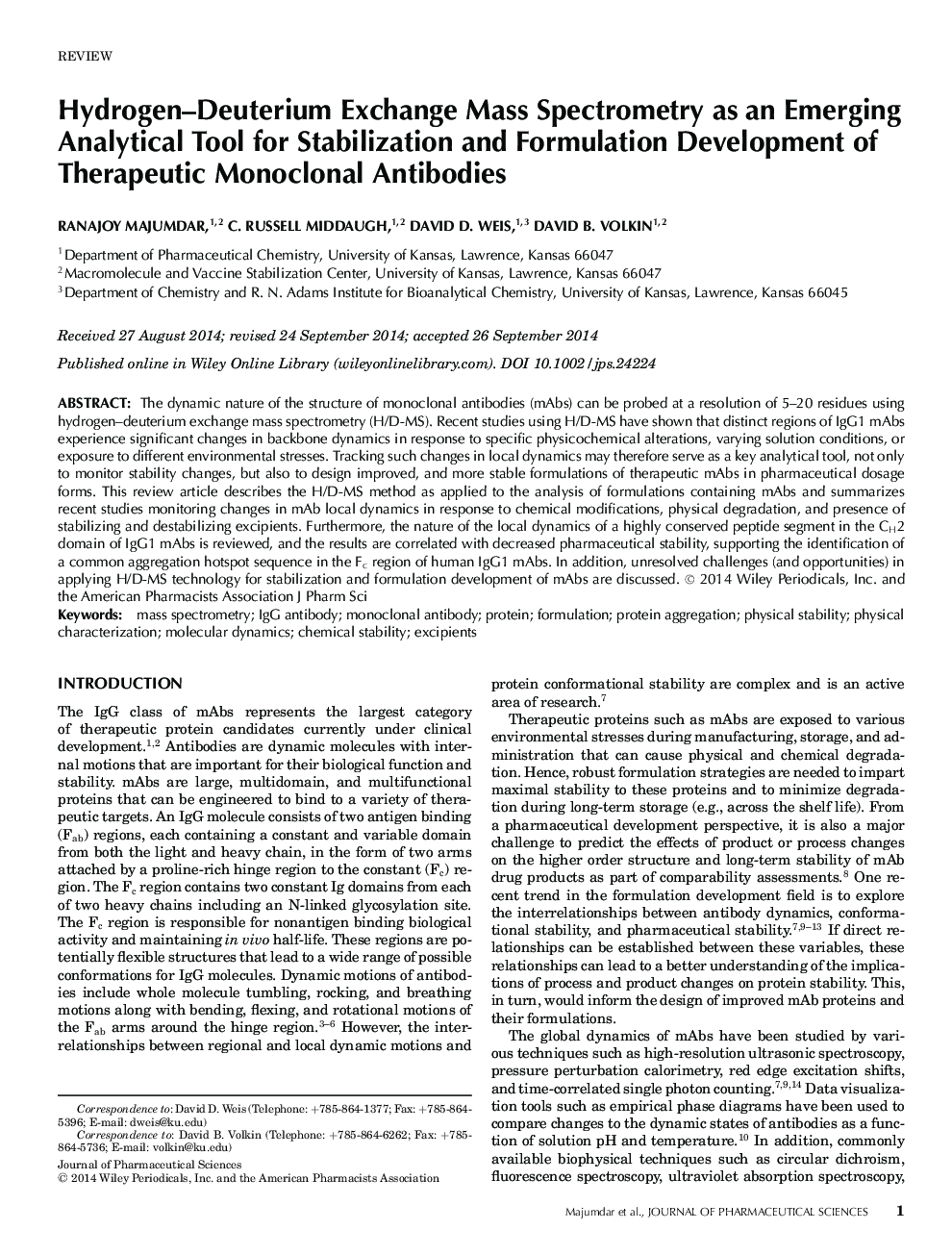| Article ID | Journal | Published Year | Pages | File Type |
|---|---|---|---|---|
| 10162156 | Journal of Pharmaceutical Sciences | 2015 | 19 Pages |
Abstract
The dynamic nature of the structure of monoclonal antibodies (mAbs) can be probed at a resolution of 5-20 residues using hydrogen-deuterium exchange mass spectrometry (H/D-MS). Recent studies using H/D-MS have shown that distinct regions of IgG1 mAbs experience significant changes in backbone dynamics in response to specific physicochemical alterations, varying solution conditions, or exposure to different environmental stresses. Tracking such changes in local dynamics may therefore serve as a key analytical tool, not only to monitor stability changes, but also to design improved, and more stable formulations of therapeutic mAbs in pharmaceutical dosage forms. This review article describes the H/D-MS method as applied to the analysis of formulations containing mAbs and summarizes recent studies monitoring changes in mAb local dynamics in response to chemical modifications, physical degradation, and presence of stabilizing and destabilizing excipients. Furthermore, the nature of the local dynamics of a highly conserved peptide segment in the CH2 domain of IgG1 mAbs is reviewed, and the results are correlated with decreased pharmaceutical stability, supporting the identification of a common aggregation hotspot sequence in the Fc region of human IgG1 mAbs. In addition, unresolved challenges (and opportunities) in applying H/D-MS technology for stabilization and formulation development of mAbs are discussed. © 2014 Wiley Periodicals, Inc. and the American Pharmacists Association J Pharm Sci 104:327-345, 2015
Keywords
Related Topics
Health Sciences
Pharmacology, Toxicology and Pharmaceutical Science
Drug Discovery
Authors
Ranajoy Majumdar, C.Russell Middaugh, David D. Weis, David B. Volkin,
